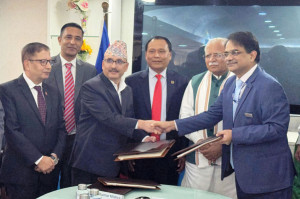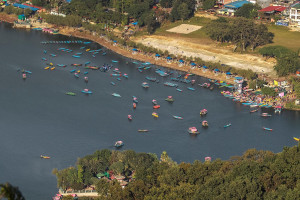Money
Govt okays 10-year Greater Lumbini tourism strategy
The Ministry of Culture, Tourism and Civil Aviation has approved a 10-year master plan to transform Lumbini into a world class tourism and pilgrimage hub.
Sangam Prasain
The blueprint entitled Greater Lumbini Tourism Promotional Plan was approved by a ministerial-level decision on Sunday. It envisages establishing Lumbini and surrounding areas as one of the iconic products in the global tourism market.
The objective of the plan is to increase the length of stay and spending of tourists and create potential impacts on the livelihood of local communities. The plan has targeted achieving 2.93 million arrivals and boosting tourism receipts four-fold to $133.67 million by 2025. Under the plan, 20,000 tourism jobs will be created.
The 10-year plan has proposed to make an investment of Rs4.95 billion. The cost excludes road and airport infrastructure. The plan, which took a year to complete, was prepared by a five-member taskforce led by tourism expert Ram Chandra Sedhai. The plan envisages increasing tourist stay by least five days.
Currently, due to lack of infrastructure and effective tour packages, visitors hardly spend a day at the birthplace of the Buddha. The Tourism Ministry estimates that a visitor spends 29 minutes in Lumbini on average.
Tourism entrepreneurs have been saying that the income from tourists visiting Lumbini is very nominal as almost all the packages have been developed by Indian tour operators.
“The Lumbini project has been expedited as part of the government’s plan to promote Nepal’s three icons-Everest, Lumbini and Pashupatinath,” said Mohan Krishna Sapkota, spokesperson of the ministry. “A number of tourism related activities will be developed to increase the length of stay in Lumbini.”
The greater Lumbini project will cover three districts, namely Kapilvastu, Rupandehi and Nawalparasi. The plan envisages integrating Lumbini, the Buddha’s birthplace; Tilaurakot, his childhood home; Devdaha, his maternal and in-laws’ home town and Ramgram in Nawalparasi, which contains one of the relics of the Buddha, into the Greater Lumbini Development Area which will be 157 square kilometres in size.
As per the plan, the roads linking all these areas will be widened into four lanes and lined with holy trees. The sustainable plan includes promoting Lumbini as a religious,
cultural and leisure destination separately. Under the scheme, Tilaurakot, Devdaha and Ramgram will be promoted for cultural heritage tourism. Likewise, Palpa, Butwal, Bhairahawa and Belhiya will be promoted as leisure, sports and shopping destinations.
The plan has also envisaged connecting Lumbini with other destinations like Pokhara, Palpa, Chitwan, Mustang, Jomsom, Dhorpatan, Swargadwari, Bardia, Rara Lake and Kailash Manasarovar.
In 2009, the Asian Development Bank (ADB) approved the airport upgradation plan as part of its South Asia Tourism Infrastructure Development Project (SATIDP).
A $99.5-million project under the SATIDP has been devised to upgrade Gautam Buddha Airport in Bhairahawa to a regional international airport and infrastructure in Lumbini. The airport component has been valued at $90.6 million.
A visitor information desk, tourism promotion activities and electric vehicles, among other projects, have been planned in Lumbini under the same package. “We have been holding discussions with the ADB for additional funding for the greater Lumbini project,” said Sapkota. “The implementation of the project will also encourage private sector investment in the region.”
The international airport which is under construction is expected to be completed by 2017. After the first phase of the upgradation project, the airport will have a capacity to handle 600,000 passengers annually.
The government has aimed to complete the entire project by 2030. The airport will be able to handle up to 6 million passengers annually when it is complete.
The number of tourists coming to visit Lumbini has been rising steadily since 2010. A number of international airlines, particularly from East Asia, have shown interest in connecting Lumbini directly if there was an international-standard airport.
Lumbini is seen as a potential world class tourist destination for 500 million Buddhists in Asia.
It hosts the birthplace of the Buddha and over 100 related archaeological sites scattered within a 50-kilometre radius.




 15.12°C Kathmandu
15.12°C Kathmandu















